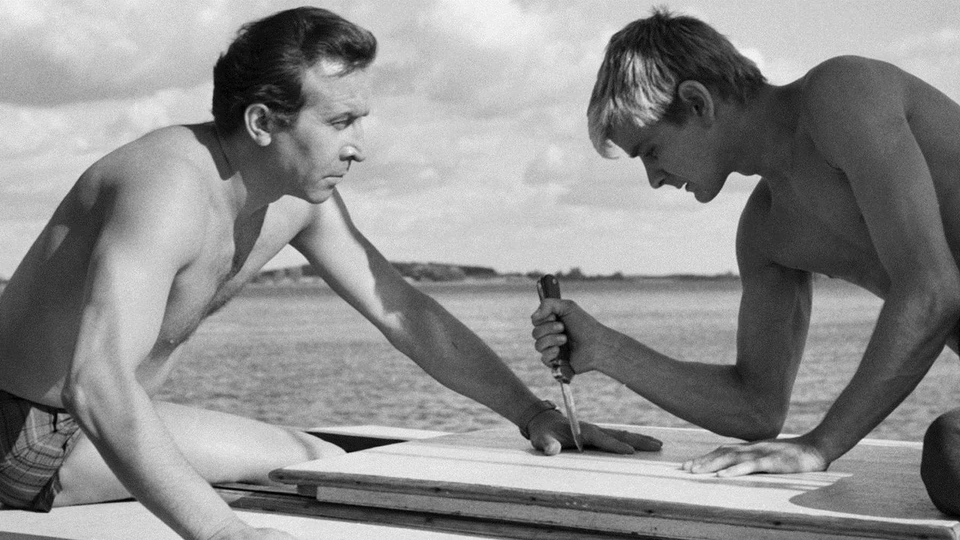Knife in the Water

A married couple picks up a college-age hitchhiker and invites him aboard their sailboat for an overnight outing in Poland’s Lake District. Nothing happens, yet everything happens.
I kept wondering how Polanski shot it. That’s a real boat on a real lake. No room for cameras or lights, yet Polanski places us aboard as a fourth passenger.
Then there’s the subtext. The near middle-aged husband seizes every opportunity to assert dominance over the young man. His wife, about the same age as the young man, morphs from unsure prim librarian to confident sultry sexpot as the voyage unfolds. The young man chafes against control, yet seems drawn to it. The script confines these volatile elements to close-quarters then steps away. I kept waiting for a traditional plot twist, and when none proved forthcoming, felt even more uncomfortable.
This brings us to the ending, which I’m still processing. After placing us aboard the boat, Polanski ends his film by inviting us—no, forcing us—to confront how we would react in the couple’s shoes. A cinematic dictionary could define “haunting” with the film’s closing shot. Knife in the Water isn’t a knockout, but a solid blow across the jaw that left me reeling.